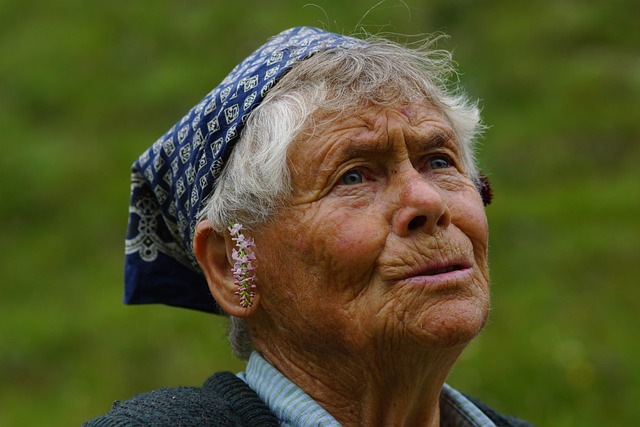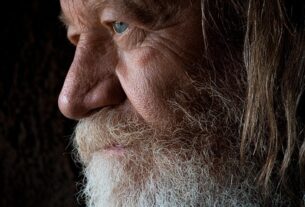Elderly companion services have significantly advanced, leveraging wearable technology and sensor tech to monitor seniors' health in real-time. These innovative systems track vital signs, daily activities, and behavior, allowing for personalized care that promotes independence while ensuring safety. Artificial intelligence enhances these services by offering predictive analytics, enabling early detection of health issues and timely medical interventions. The user-friendly design with large displays, voice commands, and auditory prompts caters to varying technological proficiencies among seniors, while telehealth capabilities connect them directly with healthcare professionals. Additional safety features like fall detection and automatic alerts are also integrated, providing a comprehensive solution that supports the health and autonomy of elderly individuals, all aimed at maintaining their well-being and quality of life within the confines of their homes. These services are instrumental in addressing both the physical and emotional needs of seniors, offering companionship that is vital for mental health and mitigating loneliness. With ongoing advancements in AI and machine learning, elderly companion services continue to evolve, ensuring proactive and adaptive care for the aging population.
Title: Leveraging Technology for Compassionate Elderly Companion Services through In-Home Health Monitoring
In the realm of elderly care, the advent of in-home health monitoring assistance has transformed the landscape of companion services. This article delves into the integration of advanced technology to enhance the support provided to seniors, focusing on key features that define effective in-home health monitoring systems. Additionally, we explore the significance of maintaining a human touch within these services and how modern in-home monitoring solutions complement this essential aspect. By highlighting the synergy between technological innovation and compassionate care, we aim to illuminate the potential of elderly companion services to improve the quality of life for our aging population.
- Integrating Technology for Enhanced Elderly Companion Services through In-Home Health Monitoring
- Key Features of Effective In-Home Health Monitoring Systems for Seniors
- The Role of Human Touch in Elderly Companion Services and How In-Home Monitoring Supports It
Integrating Technology for Enhanced Elderly Companion Services through In-Home Health Monitoring

The integration of advanced technology into elderly companion services has significantly enhanced in-home health monitoring, offering a more comprehensive approach to caring for the elderly. These innovative solutions provide real-time data on vital signs, activity patterns, and even behavioral changes, enabling caregivers and medical professionals to deliver personalized support tailored to individual needs. With wearable devices and sensor technology becoming more sophisticated and user-friendly, the elderly can now live with greater independence while benefiting from continuous health oversight. This not only ensures their safety but also offers peace of mind to both the seniors and their loved ones.
Moreover, the adoption of AI-driven analytics in elderly companion services allows for proactive healthcare management. Machine learning algorithms analyze the collected data to detect anomalies that could indicate a health issue, allowing for timely medical intervention before conditions worsen. The seamless integration of these technologies into the daily lives of seniors fosters a supportive environment that respects their autonomy while providing the necessary care and assistance to maintain their well-being and quality of life.
Key Features of Effective In-Home Health Monitoring Systems for Seniors

In-home health monitoring systems for seniors are integral tools for maintaining their well-being and ensuring they receive timely care. Effective systems in elderly companion services typically feature real-time health data tracking, which can include heart rate, blood pressure, oxygen levels, and glucose monitoring. These key features allow for continuous observation of a senior’s vital signs, alerting medical professionals or caregivers to any significant deviations that may indicate a health issue. Additionally, such systems often incorporate medication reminders, which help seniors adhere to prescribed treatment regimens and manage chronic conditions effectively.
User-friendly interfaces are another critical aspect of these systems. They should be accessible to individuals with varying levels of tech proficiency. This includes large, easy-to-read displays, simple voice commands, and clear auditory cues for the elderly using them. Moreover, these systems can integrate with telehealth services, enabling direct communication between the senior and healthcare providers. This feature is particularly valuable as it facilitates immediate professional consultation or intervention when necessary. Furthermore, advanced systems may offer fall detection and automatic alerts to caregivers or emergency services, which is a vital safety net for seniors at higher risk of falls. These comprehensive features make elderly companion services an essential component of in-home health monitoring, providing peace of mind for both the elderly and their loved ones.
The Role of Human Touch in Elderly Companion Services and How In-Home Monitoring Supports It

In-home health monitoring assistance plays a pivotal role in supporting elderly companion services by providing real-time health data and alerts, which can be crucial for the well-being of seniors. The human touch remains an integral aspect of elderly companion services, offering not just physical care but also emotional support and companionship that are vital for maintaining mental health and combating loneliness among the elderly. These services are designed to replicate the comfort and interaction of a dedicated caregiver, ensuring that seniors receive the attention and care they need to thrive in their own homes. The companionship provided by these services helps to alleviate feelings of isolation and depression, often associated with aging alone. In-home monitoring devices complement this human element by enabling caregivers to keep a watchful eye on vital signs, detect any unusual patterns, and intervene promptly in case of emergencies. This seamless integration of technology and human touch ensures that elderly individuals receive the highest standard of care, fostering independence while also providing the security of knowing that help is readily available when needed.
Furthermore, the role of in-home monitoring systems in elderly companion services extends beyond mere health surveillance. These systems facilitate communication between seniors and their loved ones, allowing for a more personalized approach to care. They also gather data that can be used to adjust and improve care plans over time, ensuring they remain effective and tailored to the individual needs of each senior. By leveraging advanced technologies, such as artificial intelligence and machine learning, these systems can predict potential health issues before they become critical, thereby enabling proactive care rather than reactive responses. This anticipatory approach enhances the quality of life for elderly individuals, making it possible for them to age in place with dignity and autonomy.
In conclusion, in-home health monitoring assistance represents a significant advancement in elderly companion services, seamlessly integrating technology with compassionate care. By highlighting key features of effective systems and emphasizing the irreplaceable human touch, these solutions not only promote health and safety but also provide valuable companionship for seniors. As we continue to refine and implement such innovations, it is clear that in-home monitoring stands as a promising beacon for supporting the independent lives of our aging population. Elderly companion services are thus evolving, ensuring a harmonious blend of technology with empathy, fostering a more enriched quality of life for seniors in their own homes.



